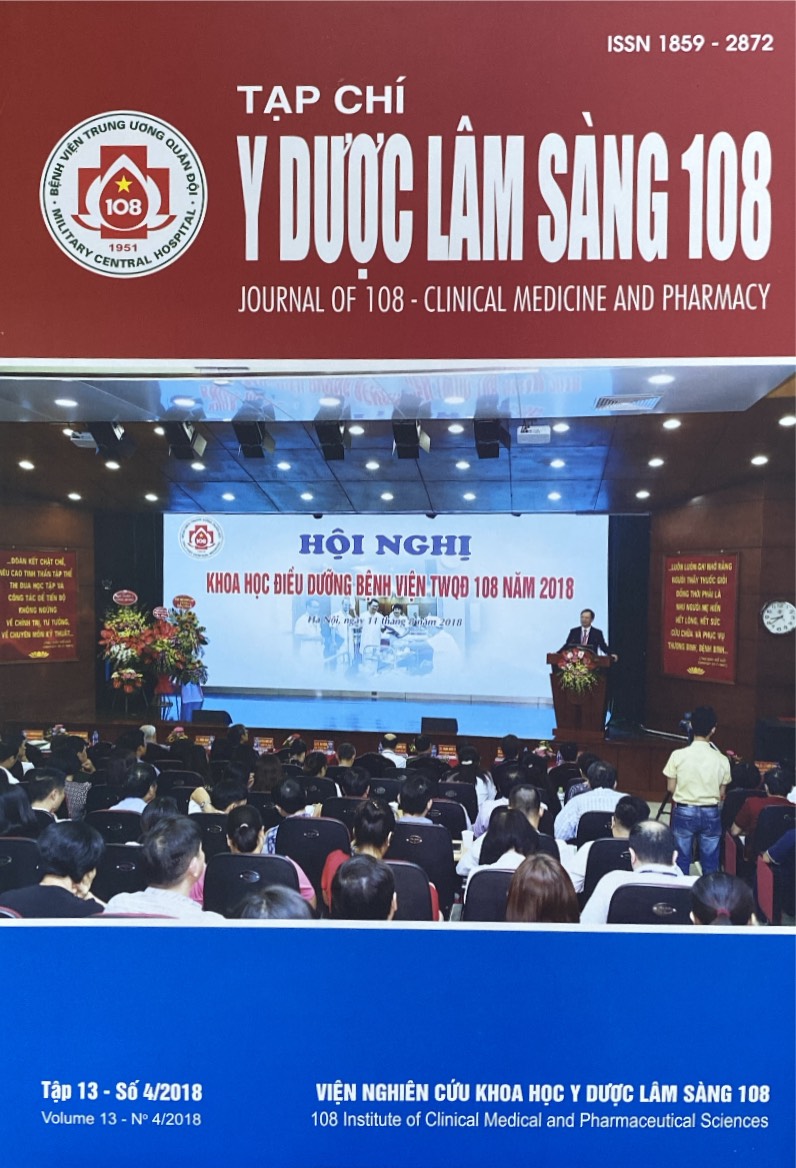Anterior capsular fibrosis characteristics after phacoemulsification surgery and intraocular lens implantation in Vietnam National Institute of Ophthalmology in 2014
Main Article Content
Keywords
Abstract
Objective: To evaluate the ratio and performance of anterior capsular fibrosis after phacoemulsification surgery with intraocular lens (IOL) implantation and some related factors. Subject and method: Pseudophakic eyes had been operated by phacoemulsification technique at Vietnam National Institute of Ophthalmology in the period from 1 January 2012 to 31 December 2012 were included in our study. Method: Analytical cross sectional description. Patients were examined and diagnosed performance of anterior capsular fibrosis after pupil dilatation. Result: 206 eyes of 168 patients with an average age of 69.2 ± 5.8 were included in the study. Anterior capsular fibrosis accounted for 95.1%, but 96.6% of cases were mild (55.3% mild, 23.8% moderate and 12.6% advance), only 3.4% at severe level. The rate of anterior capsular fibrosis was lower than in the group implanted by IOL, whose material is hydrophobic covered by heparin. IOL’s location or IOL’s haptic increased the severity of postoperative anterior capsular fibrosis. Conclusion: After the phaco surgery with IOL implantation, the ratio of anterior capsular fibrosis was high but most of cases did not affect eyesight. Heparin hydrophobic material group has the lowest rate of anterior capsular fibrosis.
Article Details
References
2. Tôn Thị Kim Thanh, Vũ Thị Thái (2004) Thể thủy tinh. Bài giảng nhãn khoa lâm sàng bán phần trước nhãn cầu, Bộ môn Mắt, Trường Đại học Y Hà Nội, Nhà Xuất bản Y học, Hà Nội, tr. 170-211.
3. Andreas JK, Michael A et al (2001) Postoperative inflammation after lens epithelial cell removal: 2 year results. JCRS 27(9): 1380-1385.
4. Hayasy H, Hayashi K, Nakao F (1998) Anterio capsule contraction and intraocular lens dislocation in eye with pseudoexfloliation syndrome. Br. J. Ophthamol 82(12): 1429-1432.
5. Joo CK (1996) Capsular opening contraction after continuous curvilinear capsulorhexis and intraocular lens implantation. J. C.R.S 22: 585-589.
6. Maar N, Rushswurm ID, Zehetmeyer M (2002) Plate - haptic silicone intraocular lens implantation: Long-term results. J. Cataract. Surg 28: 992-997.
7. Vock L, Georgopoulos M et al (2007) Effect of the hydrophylicity of acrylic intraocular lens material and haptic angulation on anterior capsule opacification. Br. J. Ophthalmol 91: 476-480.
 ISSN: 1859 - 2872
ISSN: 1859 - 2872
